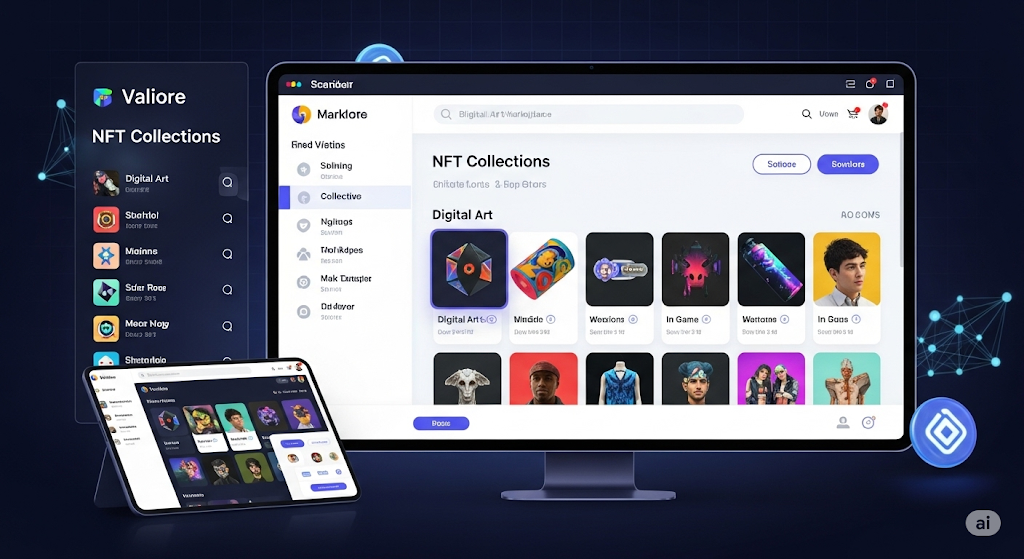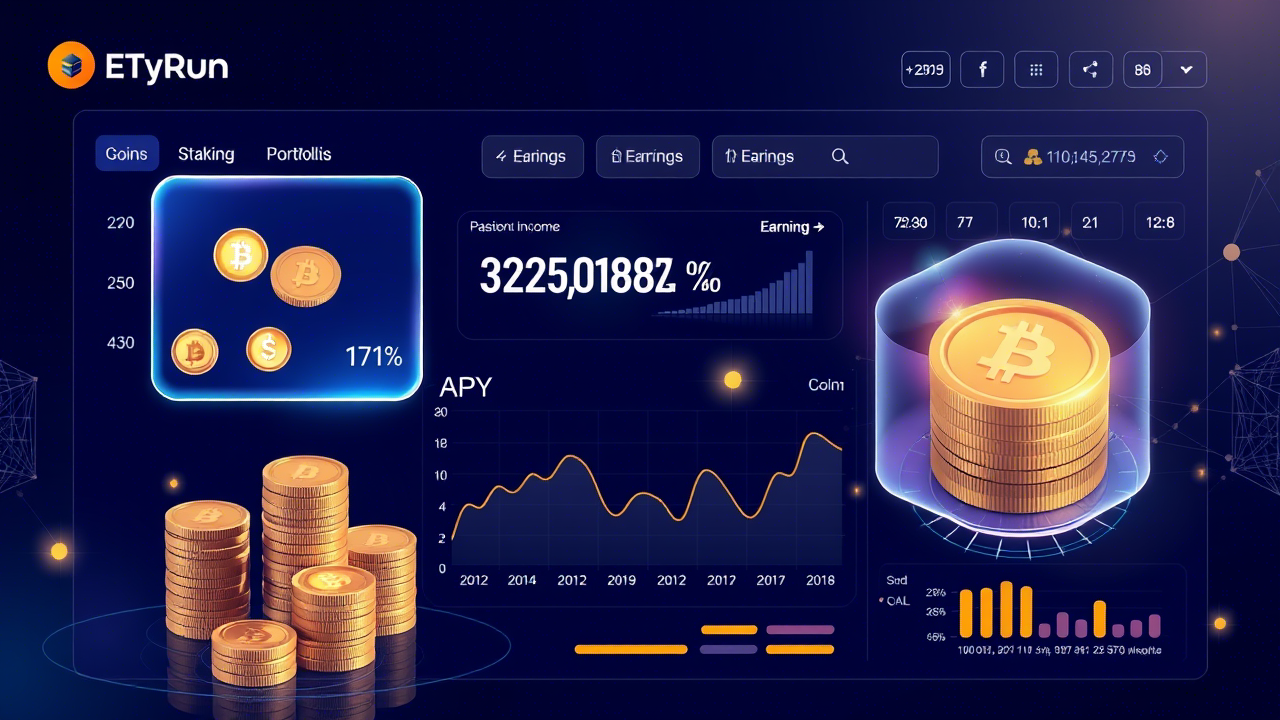Imagine a digital ledger that cannot be tampered with, exists across thousands of computers worldwide, and operates without any central authority. This revolutionary concept is blockchain technology, and it’s transforming how we think about data, trust, and financial transactions. Whether you’re a student exploring emerging technologies or a professional looking to understand the backbone of cryptocurrency, blockchain represents one of the most significant technological breakthroughs of our time.
Understanding blockchain technology isn’t just about grasping a technical concept—it’s about recognizing a fundamental shift in how digital information can be stored, verified, and shared. This distributed ledger system has moved far beyond its origins in cryptocurrency for beginners to revolutionize industries from healthcare to supply chain management.
The Foundation of Blockchain Technology
Blockchain technology operates on a simple yet powerful principle: instead of storing data in a single location controlled by one entity, information is distributed across a network of computers called nodes. Each piece of data, or “block,” contains a cryptographic hash of the previous block, creating an unbreakable chain of information.
Think of blockchain as a digital notebook that’s simultaneously held by thousands of people. Every time someone wants to add a new entry, the majority of notebook holders must agree that the entry is valid. Once added, the entry cannot be erased or altered without everyone noticing. This system eliminates the need for a central authority to verify transactions or maintain records.
The distributed ledger system ensures that no single point of failure exists. If one computer in the network goes down, thousands of others continue to maintain the complete record. This redundancy creates unprecedented levels of security and reliability that traditional centralized systems simply cannot match.
Core Components of Distributed Ledger Systems
Every blockchain network consists of several essential components that work together to maintain integrity and functionality. The first component is the network of nodes—computers that store copies of the entire blockchain and validate new transactions. These nodes communicate with each other continuously, ensuring that all copies of the ledger remain synchronized.
Cryptographic hashing serves as the second crucial component. Each block contains a unique digital fingerprint created through complex mathematical algorithms. This hash changes completely if any data within the block is altered, making tampering immediately detectable. The hash of each block also incorporates the hash of the previous block, creating the characteristic “chain” structure.
Consensus mechanisms form the third essential element. These protocols determine how the network agrees on the validity of new transactions and blocks. Whether through proof-of-work, proof-of-stake, or other methods, consensus mechanisms ensure that all participants maintain the same version of the truth without requiring a central authority.
How Blockchain Basics Work in Practice
When someone initiates a transaction on a blockchain network, the process follows a specific sequence of steps. First, the transaction is broadcast to the network, where it joins a pool of pending transactions waiting for validation. Network participants, often called miners or validators, compete to bundle these transactions into a new block.
The validation process involves solving complex mathematical problems or meeting specific criteria defined by the network’s consensus mechanism. Once a validator successfully creates a new block, they broadcast it to the entire network. Other nodes then verify the block’s validity by checking the transactions and ensuring the cryptographic hashes are correct.
After verification, the new block is added to each node’s copy of the blockchain. The network updates simultaneously, and the transactions within the block are considered confirmed. This entire process typically takes minutes to complete, depending on the specific blockchain network and its design parameters.
Blockchain Explained Through Real-World Analogies
Understanding blockchain technology becomes clearer when we compare it to familiar systems. Consider a traditional bank ledger, where all transaction records are stored in a central database controlled by the bank. If the bank’s system fails or is compromised, all records could be lost or manipulated. Blockchain technology distributes this ledger across thousands of computers, making system failure or manipulation virtually impossible.
Another helpful analogy is a group project where every team member maintains their own copy of the project document. When someone wants to make changes, they must get approval from the majority of team members. Once approved, everyone updates their copy simultaneously. This distributed approach ensures that no single person can unilaterally alter the project, and the work continues even if some team members are unavailable.
The transparency aspect of blockchain technology resembles a public bulletin board where anyone can read the posted information, but only authorized individuals can add new content. However, unlike a physical bulletin board, blockchain entries cannot be removed or altered once posted, creating a permanent and transparent record of all activities.
Types of Blockchain Networks
Blockchain technology manifests in several different forms, each designed for specific use cases and requirements. Public blockchains, like Bitcoin and Ethereum, are completely open networks where anyone can participate, view transactions, and contribute to the consensus process. These networks prioritize decentralization and transparency but may sacrifice some speed and efficiency.
Private blockchains operate within closed networks, typically controlled by a single organization or consortium. These systems offer greater control and privacy but sacrifice some of the decentralization benefits that make blockchain technology revolutionary. Private blockchains often serve enterprise applications where speed and privacy are more important than complete decentralization.
Consortium blockchains strike a balance between public and private networks. A group of organizations jointly controls these networks, sharing the benefits of blockchain technology while maintaining some level of control and privacy. This model works well for industry collaborations where multiple parties need to share data securely.
Hybrid blockchains combine elements of both public and private networks, allowing organizations to control access to certain data while making other information publicly available. This flexibility makes hybrid blockchains attractive for applications requiring both transparency and privacy.
Blockchain Technology in Financial Services
The financial sector has been among the earliest and most enthusiastic adopters of blockchain technology. Traditional banking systems rely on multiple intermediaries to process transactions, each adding time, cost, and potential points of failure. Blockchain technology eliminates many of these intermediaries, enabling direct peer-to-peer transactions.
Cross-border payments represent one of the most compelling applications of blockchain in finance. Traditional international transfers can take days to complete and involve multiple banks, each charging fees and adding delays. Blockchain-based payment systems can complete these transfers in minutes or hours, significantly reducing costs and improving speed.
Trade finance has also been revolutionized by blockchain technology. Letters of credit, bills of lading, and other trade documents can be digitized and stored on blockchain networks, reducing paperwork, preventing fraud, and accelerating the entire trade process. Banks like JPMorgan and HSBC have already implemented blockchain solutions for trade finance.
Digital identity verification represents another promising application. Blockchain technology can create tamper-proof digital identities that users control, reducing identity theft and streamlining know-your-customer processes for financial institutions.
Beyond Cryptocurrency: Blockchain Applications
While cryptocurrency brought blockchain technology to public attention, the applications extend far beyond digital money. Supply chain management has emerged as one of the most practical uses of blockchain technology. Companies can track products from manufacture to delivery, ensuring authenticity and preventing counterfeiting.
Healthcare organizations are exploring blockchain technology for secure patient record management. Medical records stored on blockchain networks can be accessed by authorized healthcare providers while maintaining patient privacy and data integrity. This approach could solve many interoperability issues that plague current healthcare systems.
Real estate transactions, traditionally involving extensive paperwork and multiple intermediaries, can be streamlined using blockchain technology. Property ownership records, transaction histories, and even property management can be handled through smart contracts on blockchain networks, reducing costs and increasing transparency.
Voting systems built on blockchain technology promise to enhance electoral integrity and transparency. Votes recorded on blockchain networks cannot be altered or deleted, providing an immutable record of electoral processes while maintaining voter privacy through cryptographic techniques. For those interested in exploring blockchain investments beyond traditional applications, consider reviewing smart investment strategies for 2025.
Technical Challenges and Limitations
Despite its revolutionary potential, blockchain technology faces several significant challenges. Scalability remains one of the most pressing issues. Popular blockchain networks like Bitcoin and Ethereum can process only a limited number of transactions per second, far fewer than traditional payment systems like Visa or Mastercard.
Energy consumption presents another major concern, particularly for proof-of-work consensus mechanisms. The computational power required to maintain network security and process transactions can be enormous, leading to environmental concerns and high operational costs.
User experience challenges persist across many blockchain applications. Interacting with blockchain networks often requires technical knowledge that average users lack. Wallet addresses, private keys, and transaction fees can be confusing and intimidating for newcomers.
Regulatory uncertainty creates additional obstacles for blockchain adoption. Governments worldwide are still developing frameworks for blockchain technology and cryptocurrency, creating compliance challenges for businesses and limiting mainstream adoption.
The Future of Distributed Ledger Technology
The evolution of blockchain technology continues at a rapid pace, with new developments addressing current limitations and expanding potential applications. Layer-2 solutions, such as the Lightning Network for Bitcoin, promise to dramatically increase transaction throughput while maintaining security.
Interoperability protocols are being developed to enable different blockchain networks to communicate with each other. This capability could create a unified ecosystem where value and information can flow seamlessly between different blockchain platforms.
Central bank digital currencies represent a significant development in blockchain adoption. Many countries are exploring or developing their own digital currencies built on blockchain technology, potentially bringing blockchain benefits to national monetary systems.
Green blockchain initiatives are addressing environmental concerns by developing more energy-efficient consensus mechanisms. Proof-of-stake and other alternative consensus methods promise to maintain security while dramatically reducing energy consumption.
Implementation Considerations for Businesses
Organizations considering blockchain technology adoption must carefully evaluate their specific needs and requirements. Not every business problem requires a blockchain solution, and traditional databases may be more appropriate for many applications.
Cost-benefit analysis should consider both the technical implementation costs and the potential savings from reduced intermediaries, improved security, and increased efficiency. Organizations should also factor in the ongoing maintenance and governance requirements of blockchain systems.
Staff training and change management become crucial considerations, as blockchain technology requires different skills and approaches than traditional systems. Organizations may need to invest significantly in education and training to successfully implement blockchain solutions.
Security considerations extend beyond the blockchain technology itself to include wallet management, private key security, and user authentication. Organizations must develop comprehensive security protocols to protect their blockchain implementations.
Getting Started with Blockchain Technology
For individuals and organizations new to blockchain technology, starting with education and experimentation provides the best foundation. Understanding blockchain basics through online courses, tutorials, and hands-on experience with existing blockchain networks can build essential knowledge.
Participating in existing blockchain networks, such as creating a cryptocurrency wallet or using decentralized applications, provides practical experience with blockchain technology. This hands-on approach helps demystify the technology and identify potential applications.
Joining blockchain communities and attending industry events can provide valuable networking opportunities and insights into emerging trends and best practices. The blockchain community is generally welcoming to newcomers and eager to share knowledge.
Pilot projects offer a low-risk way to explore blockchain applications within organizations. Starting with small-scale implementations allows teams to learn and refine their approach before committing to larger initiatives.
Regulatory Landscape and Compliance
The regulatory environment for blockchain technology varies significantly across different jurisdictions and continues to evolve rapidly. Organizations must stay informed about regulatory developments in their operating regions and ensure compliance with applicable laws and regulations.
Data privacy regulations, such as GDPR in Europe, present particular challenges for blockchain implementations. The immutable nature of blockchain records can conflict with requirements for data deletion and user rights to be forgotten.
Financial regulations affect blockchain applications in the financial sector, with different countries taking varying approaches to cryptocurrency and blockchain-based financial services. Organizations must navigate these regulatory complexities carefully.
International coordination efforts are underway to develop consistent regulatory frameworks for blockchain technology. These efforts aim to provide clearer guidance while preventing regulatory arbitrage and ensuring consumer protection.
Security Best Practices
Implementing blockchain technology securely requires attention to multiple security layers. Private key management represents one of the most critical security considerations, as lost or compromised private keys can result in permanent loss of digital assets.
Multi-signature wallets and hardware security modules provide additional layers of protection for cryptocurrency and blockchain-based assets. These solutions distribute control among multiple parties and provide offline storage for sensitive cryptographic keys. When choosing secure storage solutions, consider reviewing top crypto apps for secure trading that offer robust security features.
Regular security audits and penetration testing help identify vulnerabilities in blockchain applications and smart contracts. Third-party security firms specializing in blockchain technology can provide valuable insights and recommendations.
Employee training on security best practices becomes essential as blockchain adoption increases. Human error remains one of the most common causes of security breaches in blockchain systems.
Measuring Success and ROI
Evaluating the success of blockchain implementations requires clear metrics and measurement frameworks. Traditional IT metrics may not capture the full value of blockchain technology, particularly benefits related to trust, transparency, and disintermediation.
Cost savings from reduced intermediaries, faster transaction processing, and improved efficiency can be quantified and compared to implementation costs. However, organizations should also consider harder-to-measure benefits such as improved customer trust and brand reputation.
Risk reduction represents another important success metric. Blockchain technology can reduce various types of risks, including fraud, data breaches, and counterparty risks. Quantifying these risk reductions helps justify blockchain investments.
Long-term strategic value should be considered alongside immediate returns. Blockchain technology may provide competitive advantages and position organizations for future opportunities that are difficult to quantify in traditional ROI calculations.
FAQ
What makes blockchain technology secure?
Blockchain technology achieves security through cryptographic hashing, distributed storage across multiple nodes, and consensus mechanisms that require network agreement for changes. This combination makes tampering extremely difficult and immediately detectable.
Can blockchain technology work without cryptocurrency?
Yes, blockchain technology can function independently of cryptocurrency. Many applications use blockchain for data storage, supply chain tracking, and identity management without involving digital currencies or tokens.
How does blockchain technology differ from traditional databases?
Unlike traditional databases controlled by single entities, blockchain technology distributes data across multiple computers, requires consensus for changes, and creates immutable records that cannot be altered once confirmed.
What are the main challenges facing blockchain adoption?
The primary challenges include scalability limitations, high energy consumption, complex user interfaces, regulatory uncertainty, and the need for technical expertise to implement and maintain blockchain systems.
Is blockchain technology suitable for small businesses?
Blockchain technology can benefit small businesses, particularly those dealing with supply chain management, digital payments, or customer trust issues. However, implementation costs and complexity must be weighed against potential benefits.
Final Thought
Blockchain technology represents a fundamental shift in how we store, verify, and share digital information. While challenges remain in terms of scalability, energy consumption, and user experience, the potential applications extend far beyond cryptocurrency to transform industries from finance to healthcare. Understanding blockchain basics today positions individuals and organizations to capitalize on the opportunities this distributed ledger technology will create tomorrow. The key to successful blockchain adoption lies in starting with education, experimenting with pilot projects, and gradually building expertise while staying informed about regulatory developments and emerging best practices. For those ready to begin their blockchain journey, exploring crypto investment for beginners provides an excellent starting point.












Leave a Reply